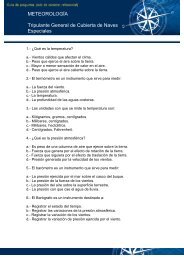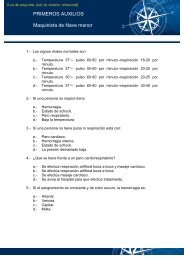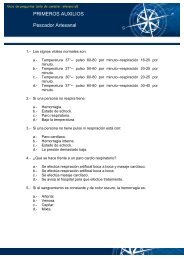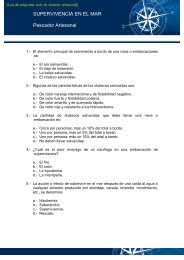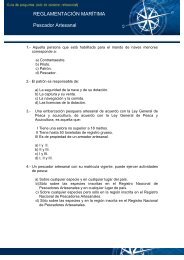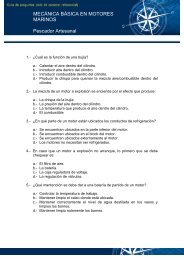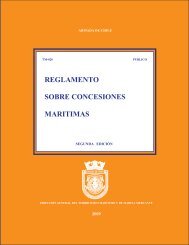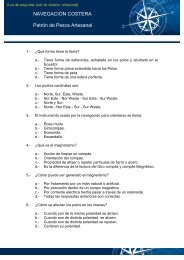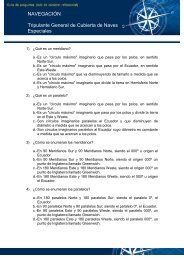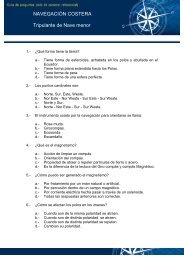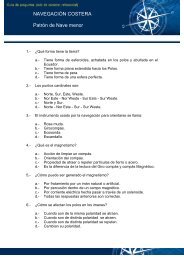METEOROLOGÍA Patrón de Nave menor - Directemar
METEOROLOGÍA Patrón de Nave menor - Directemar
METEOROLOGÍA Patrón de Nave menor - Directemar
You also want an ePaper? Increase the reach of your titles
YUMPU automatically turns print PDFs into web optimized ePapers that Google loves.
<strong>METEOROLOGÍA</strong><br />
<strong>Patrón</strong> <strong>de</strong> <strong>Nave</strong> <strong>menor</strong><br />
31.- ¿Qué es el termómetro?<br />
a.- Instrumento para medir la fuerza <strong>de</strong>l viento.<br />
b.- Instrumento para medir la presión atmosférica.<br />
c.- Instrumento para medir la temperatura.<br />
d.- Instrumento para medir la profundidad <strong>de</strong>l mar.<br />
32.- El psicrómetro es un instrumento que sirve para obtener:<br />
a.- Los datos <strong>de</strong>l viento.<br />
b.- La presión atmosférica.<br />
c.- La temperatura <strong>de</strong>l agua <strong>de</strong> mar.<br />
d.- La humedad <strong>de</strong>l aire.<br />
33.- ¿Qué es la veleta?<br />
a.- Elemento que indica la dirección <strong>de</strong>l viento.<br />
b.- Elemento que mi<strong>de</strong> la cantidad <strong>de</strong> agua caída.<br />
c.- Elemento que permite mantener el rumbo.<br />
d.- Elemento <strong>de</strong> ayuda a la navegación.<br />
34.- El barómetro es un instrumento que sirve para saber:<br />
a.- El estado futuro <strong>de</strong>l mar.<br />
b.- La presión atmosférica.<br />
c.- La humedad relativa.<br />
d.- Las precipitaciones caídas.<br />
35.- El Barógrafo es un instrumento <strong>de</strong>stinado a registrar:<br />
a.- Las variaciones <strong>de</strong> presión.<br />
b.- Las variaciones <strong>de</strong>l viento.<br />
c.- Las variaciones <strong>de</strong> humedad.<br />
d.- Las variaciones <strong>de</strong> temperaturas.<br />
36.- ¿Que se entien<strong>de</strong> por temperatura?<br />
a.- Mayor o <strong>menor</strong> sensación <strong>de</strong> calor en el aire.<br />
b.- Peso que ejerce el aire sobre la tierra.<br />
c.- Masas <strong>de</strong> aire que circulan <strong>de</strong> norte a sur.<br />
d.- Vientos cálidos que afectan el clima.




